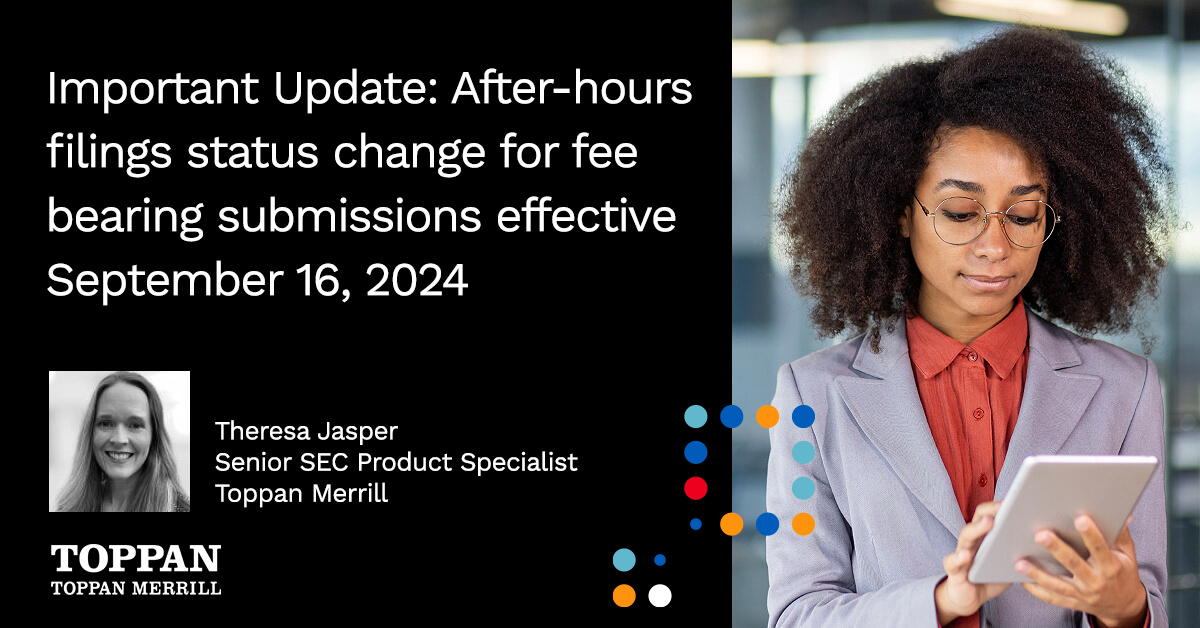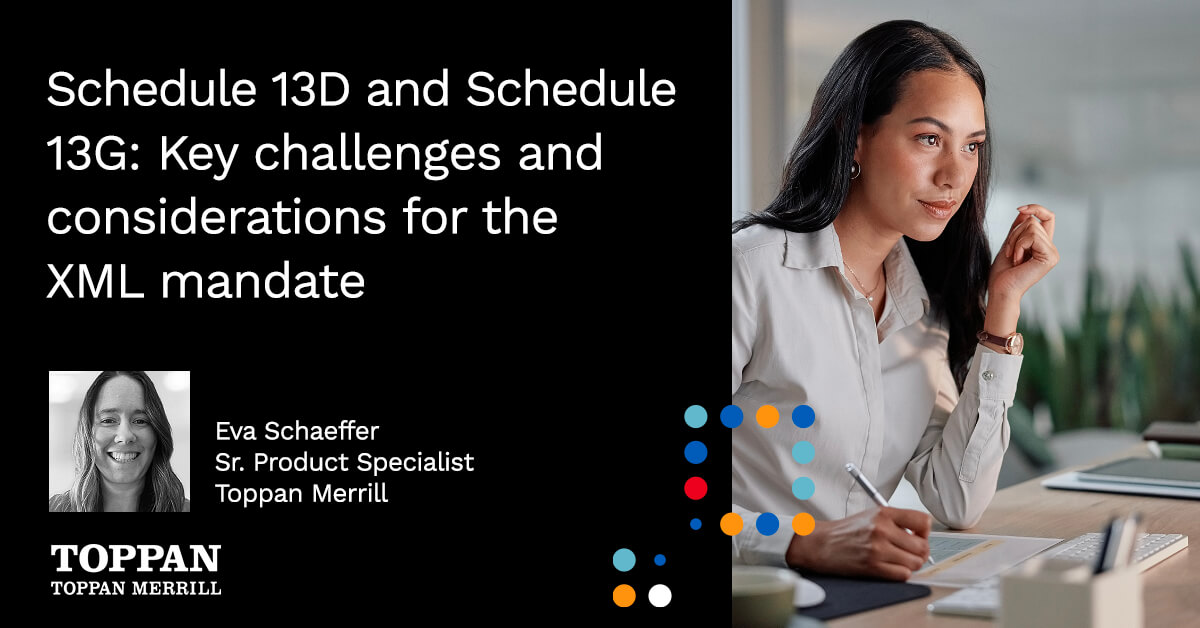On March 6, 2024, the Securities and Exchange Commission (SEC) voted at an open meeting to adopt final rules to mandate climate-related disclosure by public companies. The long-awaited rules will require qualitative disclosure on climate risk, risk management, governance and targets, as well as quantitative emissions and expenditure reporting requirements under certain circumstances. Initial disclosures under the final rules for large accelerated filers will be due in 2026, with emissions and financial expenditures disclosures due in 2027. Please see the summary table at the end of this alert for more information on disclosure dates, including for other filers.
While the adopted qualitative disclosure requirements are broadly consistent with the proposed requirements, the final rules introduce numerous significant changes with respect to emissions reporting and attestations that are intended to reduce reporting burdens on many companies and provide increased breathing room for disclosure preparation. SEC Chair Gary Gensler, in his prepared remarks, noted several times that the adopted rules are “grounded in materiality,” and almost all the new disclosure requirements will be subject to a materiality determination, in line with other parts of Regulation S-K. Of particular note, the final rules limit Scope 1 and 2 greenhouse gas (GHG) emissions reporting to material emissions and generally link climate expenditure, strategy, transition plans and targets disclosures to material risks and impacts. Additionally, the final rules do not include Scope 3 emissions reporting requirements and allow for significant phase-in periods for attestations of Scope 1 and 2 GHG emissions. The final rules also pare back the financial statement disclosure from the proposed rule by removing the requirement to disclose the impact of climate-related events on each line item of a company’s financial statements.
The SEC published its initial climate rule proposal on March 21, 2022, which went on to generate more than 24,000 comments from the public, in addition to extensive congressional, media and industry coverage. Adoption of the final rules was delayed several times, during which period other climate-related disclosure rules were published in the US and other jurisdictions. These include three climate reporting laws in California (SB 253, SB 261 and AB 1305) and the Corporate Sustainability Reporting Directive (CSRD) framework in the EU. Although the SEC’s modified emissions reporting requirements will likely be met with some relief for many issuers, as well as nonpublic companies in issuers’ value chains, the impact of these changes will be significantly blunted due to the broad Scope 1, 2 and 3 emissions reporting requirements under the California and EU rules, which are expected to apply to thousands of US companies.
Disclosure will be required for both domestic and foreign private issuers in annual reports on Forms 10-K and 20-F, as applicable, as well as in registration statements under the Securities Act. The climate rules will apply similarly to foreign private issuers, except that an issuer that files consolidated financial statements under International Financial Reporting Standards (IFRS) as issued by the International Accounting Standards Board (IASB) would apply IFRS as the basis for calculating and disclosing the financial statement metrics rather than US generally accepted accounting principles (GAAP). Foreign private issuers that qualify to use the Multijurisdictional Disclosure System (MJDS) and file annual reports on Form 40-F are exempt from the final climate-related disclosure rules.
The table below provides a high-level summary of the emissions and qualitative disclosure requirements under the new Regulation S-K Item 1500, as well as the financial statement disclosure requirements under the new Regulation S-X Article 14.
Emissions and qualitative disclosure requirements
| Item | Adopted requirement |
|---|---|
| Disclosure of climate-related governance Reg S-K Item 1501 | Disclosure concerning board oversight of climate-related risks and of progress against any climate-related target or goal or any transition plan (i.e., the company’s strategy and implementation plan to address climate-related risks). This item also requires disclosure of management’s role in assessing and managing those risks, including disclosure of management’s expertise and reporting up obligations. |
| Disclosure of climate-related risks Reg S-K Item 1502(a), (b) | Disclosure of climate-related risks that have materially impacted or are reasonably likely to have a material impact on a company’s strategy, results of operation or financial condition, whether over the short or long term. Disclosure should include actual and potential material impacts of both physical (acute and chronic) and transitional (transition to a lower carbon economy) risks, such as increased costs resulting from the adoption or potential adoption of new governmental regulations or policies, technologies to mitigate or adapt to climate-related risks or climate-related litigation, or changing consumer or investor preferences. |
| Disclosure of climate-related strategy Reg S-K Item 1502(c)-(g) | Disclosure of how the impact of climate-related risks is integrated into strategy, financial planning and capital allocation, including the role of targets and transition plans, as well as quantitative and qualitative description of material expenditures incurred, material impacts on financial estimates, and assumptions made in connection with risk mitigation and adaptation. Companies also are required to disclose details of transition plans, use of scenario analysis to assess the material impact of climate-related risks, and use of internal carbon pricing to evaluate and manage climate-related risk. |
| Disclosure of climate-related risk management Reg S-K Item 1503 | Disclosure of any processes used for identifying, assessing and managing material climate-related risks and whether and how any of these processes are integrated into the company’s overall risk management system or processes. |
| Disclosure of climate-related targets or goals Reg S-K Item 1504 | Disclosure of any climate-related targets or goals if the target or goal has materially affected or is reasonably likely to materially affect the registrant’s business, results of operations or financial condition, including: – The scope of activities included in the target. – The unit of measurement, including whether the target is absolute or intensity-based. – The defined time horizon by which the target is intended to be achieved, and whether the time horizon is consistent with one or more goals established by a climate-related treaty, law, regulation, policy or organization. – The defined baseline time period and baseline emission against which progress will be tracked, with a consistent base year set for multiple targets. – Qualitative description of how the company intends to meet its climate-related targets or goals. – Annual updates of actions taken toward meeting the target or goal. |
| GHG emissions disclosure Reg S-K Items 1505 and 1506 | Large accelerated filers (LAFs) and accelerated filers (AFs) that are not otherwise exempt1 must disclose Scope 1 and/ or 2 GHG emissions if such emissions are material. Emissions must be presented on a gross basis, not net of purchased or generated carbon offsets. The adopting release emphasizes that the traditional federal securities law conception of materiality applies when evaluating emissions, and that materiality is not determined “merely by the amount of these emissions.” In particular, the adopting release notes that emissions may be material if disclosure is necessary to enable investors to understand progress toward achieving climate targets or transition plans disclosed under Item 1502 or 1504, or when emissions are linked to transition risks – including risks arising from emissions reporting obligations under foreign or state law. Scope 1 and 2 emissions are not, however, de facto material whenever a registrant identifies a material transition risk, as such risks may arise due to factors unrelated to a registrant’s emissions. |
| GHG emissions – Scope 1 Reg S-K 1500(a) | Disclosure of direct GHG emissions from operations that are owned or controlled by a company (disaggregated by a constituent greenhouse gas only if such constituent gas is individually material) in terms of CO2e. |
| GHG emissions – Scope 2 Reg S-K 1505(a) | Disclosure of indirect GHG emissions from the generation of purchased or acquired electricity, steam, heat or cooling that is consumed by operations owned or controlled by a company (disaggregated by a constituent greenhouse gas only if such constituent gas is individually material) in terms of CO2e. |
| GHG methodology Reg S-K 1505(b) | Companies required to disclose GHG emissions must describe the methodology, significant inputs and significant assumptions used to calculate emissions metrics. The disclosure would include the company’s organizational boundaries,2 operational boundaries,3 calculation approach, protocol or standards used, emissions factors, and any calculation tools used to calculate its GHG emissions and any reasonable estimates used. |
| Attestation of Scope 1 and 2 emissions Reg S-K 1506 | LAFs and AFs will be required to obtain and attach to their filings an attestation report regarding Scope 1 and/or 2 emissions and provide certain disclosures about the attestation service provider on a phased-in basis. LAFs and AFs must have attestation with “limited assurance” beginning in the third fiscal year after GHG emissions are disclosed – fiscal year beginning (FYB) 2029 for LAFs and FYB 2031 for AFs. LAFs must have attestation with “reasonable assurance” beginning in the seventh fiscal year after GHG emissions are disclosed (FYB 2033). The attestation service provider must be a person or firm that is an expert in GHG emissions, with significant experience in measuring, analyzing, reporting or attesting to GHG emissions, and independent with respect to the company and its affiliates during the attestation engagement period. In addition to including the emissions attestation report, companies must also include certain additional disclosure regarding the attestation provider, including whether such provider is subject to an oversight inspection program, resigned or was dismissed, and any disagreements with former providers. Companies not subject to attestation requirements under Item 1506 that voluntarily obtain third-party assurance (e.g. companies obtaining assurance for internal comfort in advance of the FYB 2029 report) will be required to provide disclosure, including identifying the assurance provider and assurance standard used, a description of the level and scope of assurance and the results of the review, and any material business relationships of the assurance provider with the company. |
| Safe harbors Reg S-K 1507 | The forward-looking statement safe harbors under the Securities Act and Exchange Act cover disclosure of targets and goals, scenario analysis, transition plans and the use of internal carbon prices under the climate rules. Forward-looking statements do not include statements of historical facts, such as the terms of carbon offsets or renewable energy credit certificates (RECs) or material expenditures disclosed under Item 1504. |
| Disclosure related to severe weather events Reg S-X 14-02 | A new article added to Regulation S-X requires disclosure in notes to a company’s audited financial statements of the impact of severe weather events and other natural conditions (e.g., hurricanes, tornadoes, drought, wildfires, etc.) and transition-related activities. A company should include the basis for calculation of the effects of severe weather events on the financial statements and clearly display the periods at issue. These metrics would be subject to audit by an independent auditor and would also be within the scope of the company’s internal controls over financial reporting. |
| Disclosure of contextual information related to severe weather events Reg S-X 14-02(a), (f) | If a company is required to disclose a financial statement effect (as described further below), then it must also provide contextual information about how the effect was derived, including any significant inputs and assumptions, significant judgments made and any policy decisions used to calculate the effects. Any recoveries recognized as a result of a severe weather event and other natural conditions must be separately stated in the aggregate. Disclosure should identify where such recoveries are presented in the income statement and balance sheet. |
| Financial statements – expenditure metrics Reg S-X 14-02(c) | Disclosure of aggregate expenditures expensed as incurred and losses as a result of severe weather events and other natural conditions. However, disclosure of expenditures is only required if the aggregate amount of expenditures expensed as incurred and losses is equal to or exceeds 1% of the absolute value of income or loss before income tax expense or benefit for the fiscal year. However, no disclosure is required if the aggregate amount is less than $100,000 for the fiscal year. |
| Financial statements – capitalized costs and charges Reg S-X 14-02(d) | Disclosure of aggregate capitalized costs and charges as a result of severe weather events and other natural conditions. However, disclosure of capitalized costs is only required if the aggregate amount of capitalized costs and charges incurred is equal to or exceeds 1% of the absolute value of stockholders’ equity or deficit at the end of the fiscal year. However, no disclosure is required if the aggregate amount is less than $500,000 for the fiscal year. |
| Financial statements – carbon offsets and RECs Reg S-X 14-02(e) | If carbon offsets or RECs are used as a material component of a company’s plan to achieve its climate-related targets and goals, then a company must disclose the aggregate amount of capitalized carbon offsets and RECs recognized and the aggregate amount of losses incurred on the capitalized carbon offsets and RECs. |
| Financial statements – financial estimates and assumptions Reg S-X 14-02(h) | Qualitative disclosure of whether the estimates and assumptions used to produce the consolidated financial statements were materially impacted by exposures to risks and uncertainties associated with – or known impacts from – severe weather events and other natural conditions or any climate-related targets or transition plans. |
Disclosure compliance dates
Reporting requirements under the climate rules are based on fiscal years beginning in a given calendar year – or “FYBs.” For example, FYB 2025 would include fiscal years beginning on January 1 through December 31, 2025.
| Filer type | Qualitative disclosures and financial statement effects | Financial expenditures under S-K items 1502(d)(2), 1502(e)(2) and 1504(c)(2) | Electronic tagging |
|---|---|---|---|
| Large accelerated filer | FYB 2025 (filed in 2026*) | FYB 2026 (filed in 2027) | FYB 2026 (filed in 2027) |
| Accelerated filer, other than a smaller reporting company (SRC) or emerging growth company (EGC) | FYB 2026 (filed in 2027) | FYB 2027 (filed in 2028) | FYB 2026 (filed in 2027) |
| Nonaccelerated filer, SRC or EGC | FYB 2027 (filed in 2028) | FYB 2028 (filed in 2029) | FYB 2027 (filed in 2028) |
| Filer type | Scope 1 and 2 emissions disclosure** | Limited assurance attestation** | Reasonable assurance attestation** |
|---|---|---|---|
| Large accelerated filer | FYB 2026 (filed in 2027) | FYB 2029 (filed in 2030) | FYB 2033 (filed in 2034) |
| Accelerated filer, other than a SRC or EGC | FYB 2028 (filed in 2029) | FYB 2031 (filed in 2032) | N/A |
* All filing dates assume December 31 fiscal year-ends.
** To allow for additional time to prepare emissions data, disclosure of GHG emissions data may be forward incorporated into a company’s second quarter 10-Q or filed in a 10-K/A by the filing deadline for the second quarter 10-Q. For foreign private issuers, GHG emissions data is due in a 20-F/A no later than 225 days after the fiscal year-end. In each case, to take advantage of this delay, the issuer must include a statement in its annual report on Form 10-K or 20-F, as applicable, to indicate its express intention to later amend its filing to make these GHG emissions disclosures.
The new rules will become effective 60 days after publication in the Federal Register. Companies will be required to comply with the new rules based on filer status. For detailed information regarding filer status determination, refer to Cooley’s Guide to Determining Securities Exchange Act Filer and Smaller Reporting Company Status.
Notes
- AFs that are smaller reporting companies or emerging growth companies are not required to provide GHG emissions disclosure.
- “Organizational boundaries” refer to the company’s determination of the boundaries that define the operations that it owns or controls for purposes of calculating GHG emissions. If such boundaries materially differ from the scope of entities and operations included in a company’s consolidated financial statements, the rules will require a brief explanation of this difference.
- “Operational boundaries” refer to the boundaries that determine the direct and indirect emissions associated with the business operations owned or controlled by a registrant.
View source (for all formatting, tables, footnotes, etc.) >>



